December 29th Scots Book of Days. A.D. Thomas Becket, Archbishop of Canterbury.
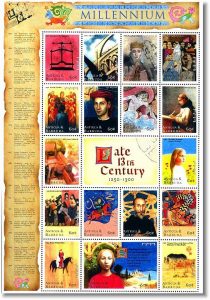 December 29 – 1170 Thomas Becket, Archbishop of Canterbury, was assassinated inside Canterbury Cathedral by followers of King Henry II (who controlled Scotland, son of Matilda, daughter of Editha of Scotland, daughter of Malcolm 3rd Caennmore, King of Scots); Saint Beckett became an immediate martyr, in the Catholic Church, and later in the Anglican Church. The Archbishop of York is second only to the Archbishop of Canterbury. At the time of the Norman invasion, York had jurisdiction over the dioceses in the Northern Isles and Scotland. In 1154 the suffragan sees of the Isle of Man and Orkney were transferred to the Norwegian archbishop of Nidaros (today’s Trondheim), and in 1188 all the Scottish dioceses except Whithorn were released from subjection to York, so that only the dioceses of Whithorn (Wigtownshire Dumfriies Galloway), and Carlisle remained to the Archbishops as suffragan sees. In the reign of Henry III (1216-1272) however, when the Augustinians in Carlisle joined the rebels who temporarily handed the city over to Scotland and elected their own bishop. When the revolt was ended, the Augustinians were expelled. Diocese of Sodor and Man were returned to York during the 14th century, to compensate for the loss of Whithorn to the Scottish Church. Sodor has come from obscurity in the 21st century as the island location for Thomas the Steamengine (a popular children’s book series).
December 29 – 1170 Thomas Becket, Archbishop of Canterbury, was assassinated inside Canterbury Cathedral by followers of King Henry II (who controlled Scotland, son of Matilda, daughter of Editha of Scotland, daughter of Malcolm 3rd Caennmore, King of Scots); Saint Beckett became an immediate martyr, in the Catholic Church, and later in the Anglican Church. The Archbishop of York is second only to the Archbishop of Canterbury. At the time of the Norman invasion, York had jurisdiction over the dioceses in the Northern Isles and Scotland. In 1154 the suffragan sees of the Isle of Man and Orkney were transferred to the Norwegian archbishop of Nidaros (today’s Trondheim), and in 1188 all the Scottish dioceses except Whithorn were released from subjection to York, so that only the dioceses of Whithorn (Wigtownshire Dumfriies Galloway), and Carlisle remained to the Archbishops as suffragan sees. In the reign of Henry III (1216-1272) however, when the Augustinians in Carlisle joined the rebels who temporarily handed the city over to Scotland and elected their own bishop. When the revolt was ended, the Augustinians were expelled. Diocese of Sodor and Man were returned to York during the 14th century, to compensate for the loss of Whithorn to the Scottish Church. Sodor has come from obscurity in the 21st century as the island location for Thomas the Steamengine (a popular children’s book series).
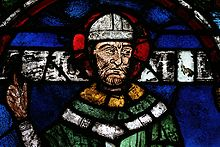 Stained glass window of Thomas Becket in Canterbury Cathedral. Draft of Constitutions was assisted by Roger de Clare, 2nd Earl of Hertford From Roger’s munificence to the Church and his numerous acts of piety, Roger was called the “Good Earl of Hertford”. The Constitutions of Clarendon were claimed to restore the judicial customs observed during the reign of Henry I (1100–1135), or they were a part of Henry II’s larger expansion of royal jurisdiction into the Church and civil law. The “benefit of Clergy” of ecclesiastical privilege, covered widows and orphans as well as clerks.
Stained glass window of Thomas Becket in Canterbury Cathedral. Draft of Constitutions was assisted by Roger de Clare, 2nd Earl of Hertford From Roger’s munificence to the Church and his numerous acts of piety, Roger was called the “Good Earl of Hertford”. The Constitutions of Clarendon were claimed to restore the judicial customs observed during the reign of Henry I (1100–1135), or they were a part of Henry II’s larger expansion of royal jurisdiction into the Church and civil law. The “benefit of Clergy” of ecclesiastical privilege, covered widows and orphans as well as clerks.
Clarendon Palace is a medieval ruin near Salisbury in Wiltshire, England, located in Clarendon forest. The palace was a royal residence for both Henry II (descendant Matilda, daughter of Editha, daughter of Malcolm 3rd Caennmore King of Scots) and Henry III (Grandson of Henry 2nd and thus, 3rd great grandson of Malcolm 3rd) and was the location of the Assize of Clarendon which developed the Constitutions of Clarendon.
Clarendon is the name of towns in Arkansas, New York, Pennsylvania, Texas, Vermont, and Michigan. Clarendon, Virginia, a business district of Arlington County, is a stop on the Orange line of the Metro Clarendon (Washington Metro), a city mass transit station. Other Clarendons are in Jamaica, Canada (2 locations), Australia (5 locations), and businesses.
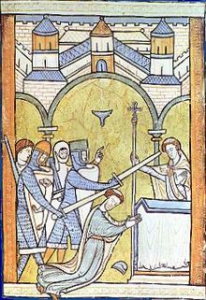 Four years later, 1174, an invasion force from Scotland, led by their king, William the Lion, was advancing from the North. Henry II saw his own predicament as a sign from God, that his treatment of Becket would be rewarded with defeat. Henry immediately did penance at Canterbury for the Archbishop’s fate and events took a turn for the better. Henry II sent his troops to meet the Scots at Alnwick, where the English scored a devastating victory. King William was captured in the chaos, and within months all the problem fortresses had been torn down.
Four years later, 1174, an invasion force from Scotland, led by their king, William the Lion, was advancing from the North. Henry II saw his own predicament as a sign from God, that his treatment of Becket would be rewarded with defeat. Henry immediately did penance at Canterbury for the Archbishop’s fate and events took a turn for the better. Henry II sent his troops to meet the Scots at Alnwick, where the English scored a devastating victory. King William was captured in the chaos, and within months all the problem fortresses had been torn down.
13th -century manuscript illumination of Becket’s assassination
1503 Battle of Garigliano (1503) fought on December 29, 1503 between a Spanish army under Gonzalo Fernández de Cordoba and a French army commanded by Ludovico II, Marquis of Saluzzo. These continental wars will stimulate France’s auld alliance to drag Scotland into battle and disaster at Flodden in 1513.
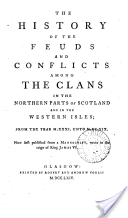 1542 sometime in – Battle of Alltan-Beath Scottish clan battle said to have taken place in the year 1542 in the village of Knockartel, Sutherland, in the Scottish Highlands. It was fought between men of the Clan MacKay, Clan Sutherland and Clan Murray.
1542 sometime in – Battle of Alltan-Beath Scottish clan battle said to have taken place in the year 1542 in the village of Knockartel, Sutherland, in the Scottish Highlands. It was fought between men of the Clan MacKay, Clan Sutherland and Clan Murray.
The History of the Feuds and Conflicts Among the Clans in the Northern Parts of Scotland and in the Western Isles: From the Year M.XXXI. Unto M.DC.XIX. Now First Published from a Manuscript, Wrote in the Reign of King James VI. 1764 Robert and Andrew Foulis printers Glasgow.
1660 Convention Parliament ends. (25 April 1660 – 29 December 1660). Elected as a “free parliament”,[11] i.e. with no oath of allegiance to the Commonwealth or to the monarchy, it was predominantly Royalist in its membership. All the acts of the Commonwealth parliaments were obliterated from the legal record.
1778 – American War for Independence: 3,500 British soldiers under the command of Lieutenant Colonel Archibald Campbell capture Savannah, Georgia. 71st Regiment of Foot, Fraser’s Highlanders. In 1776, after a battle aboard a vessel in Boston Harbor, Campbell was captured by the Americans and held prisoner until 1778. On 6 May, 1778, Campbell was released in exchange for the patriot hero, Ethan Allen.
- Campbell Earl of Argyll 1010 2Montgomery2Blair 2Cochrane2Miller 2Simmons2Choate to zoe TOAG
The American patriot Alexander Green, one of Lee’s Legion and aide-de-camp to Major-General Nathanael Greene referred to Campbell’s concern for the civil population and lack of bitterness towards his former captors. He also revealed how the Patriot’s feared Campbell as a commander of great ability.
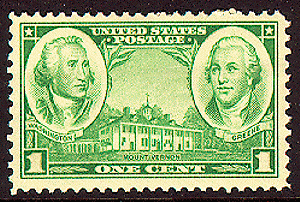 1936, George Washington and Nathanael Greene and Mount Vernon, as the two generals in the Continental Army.
1936, George Washington and Nathanael Greene and Mount Vernon, as the two generals in the Continental Army.
Greene related of Campbell –
As conqueror of Savannah, [Campbell] immediate care was to soften the asperities of war, and to reconcile to his equitable government, those who had submitted, in the first instance, to the superiority of [Campbell’s] arms. Though but lately released from close and rigorous confinement, which [Campbell] had suffered in consequence of indignities offered to General Charles Lee, a prisoner at New York, [Campbell] harboured no resentments, and considered his sufferings rather the effect of necessity, than wilful persecution. Oppression was foreign to [Campbell’s] nature, and incompatible with his practice. [Campbell] made proper allowance for an attachment to cherished principles nor with-held his applause from those who bravely supported them. [Campbell] used no threats to gain proselytes, no artifice to ensnare them. Such of the inhabitants as voluntarily made a tender of service, were favourably received; but [Campbell] was ever disinclined to invite them to take up arms in the British cause, lest in the fluctuating councils of his governments, [Campbell] should lead them to destruction. [Campbell] had too frequently seen them lavished of professions of permanent support, leaving their deluded adherents to the mercy of the government, which, in an evil hour, they had abandoned. The friends of our independence had everything to dread from his wisdom and humanity, but their alarm was short of duration. Lieutenant Colonel Campbell had too nice a sense of honour to be made instrument of injustice and oppression, and [Campbell] was speedily called upon to relinquish his command, to a superior, less scrupulous and better disposed to second the harsh measures of the Commander in Chief. Campbell became provisional governor of Georgia then and named Jacques Marcus Prevost his lieutenant and successor before returning to England.
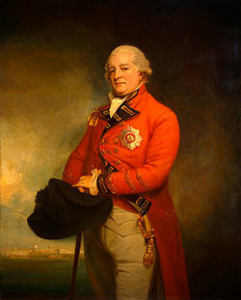 Archibald Campbell by George Romney, c.1792, wearing the uniform of a major-general and the star of the Order of the Bath, and with Madras’s Fort St. George in the background. Archibald was baptized 24 August 1739 at Inveraray, Scotland. He was the second son of James Campbell (1706–1760) 3rd of Tuerechan (8th Chief of Tearlach, descended from Clan Campbell of Craignish), Commissary of the Western Isles of Scotland, and Elizabeth (d.1790), daughter of James Fisher, Provost of Inveraray. He grew up with his family at Dunderave Castle, and enjoyed the patronage of both Archibald Campbell, 3rd Duke of Argyll and Henry Dundas, 1st Viscount Melville. James Boswell acted as Campbell’s legal advisor 1774.
Archibald Campbell by George Romney, c.1792, wearing the uniform of a major-general and the star of the Order of the Bath, and with Madras’s Fort St. George in the background. Archibald was baptized 24 August 1739 at Inveraray, Scotland. He was the second son of James Campbell (1706–1760) 3rd of Tuerechan (8th Chief of Tearlach, descended from Clan Campbell of Craignish), Commissary of the Western Isles of Scotland, and Elizabeth (d.1790), daughter of James Fisher, Provost of Inveraray. He grew up with his family at Dunderave Castle, and enjoyed the patronage of both Archibald Campbell, 3rd Duke of Argyll and Henry Dundas, 1st Viscount Melville. James Boswell acted as Campbell’s legal advisor 1774.
- Boswell of Auchinleck Ayr 13c 2Arnot2Colville 2Semple 2Montgomerie2 Cochrane2 Miller2 Simmons2 Choate zoe ToaG
Campbell Earl of Argyll 1010 2Montgomery2 Blair 2 Cochrane2 Miller2 Simmons2 Choate to zoe TOAG
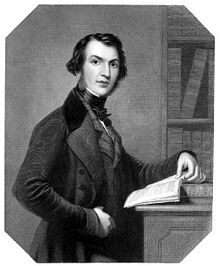 1809 – William Ewart Gladstone, born, Prime Minister of the United Kingdom (d. 1898) served four times as Chancellor of the Exchequer. Scott’s poems and novels were amongst the earliest texts Gladstone read; he read no works (in English), except the Bible.
1809 – William Ewart Gladstone, born, Prime Minister of the United Kingdom (d. 1898) served four times as Chancellor of the Exchequer. Scott’s poems and novels were amongst the earliest texts Gladstone read; he read no works (in English), except the Bible.
http://dailysirwalter.blogspot.com/
4th son of the merchant Sir John Gladstone, 11 Dec 1764, Leith, Midlothian, port for Edinburgh, Scotland, and his 2nd wife, Anne MacKenzie Robertson, from Dingwall, Ross-shire. Gladstone was born and brought up in Liverpool, Lancashire.
Gladstone in the 1830s. The disaster of Karthoum, and loss of General Gordon, will bring down Gladstone’s government and ministry. Grandparents Andrew Robertson of Park House, Dingwall, Provost of Dingwall, Ross, Scotland. b ca 1719, d 23 Sep 1796, Dingwall, [About 250 years later the Lord of Dingwall is featured as a character in Disney’s movie Brave.] married 12 Apr 1760, Anne Mackenzie. Great Great Grand parents Rebecca, dau of Sir Robert Munro, 3rd Baronet, of Fowlis, East Angus, Scotland, John Barbe of Aldowrie, co. Inverness, Scotland, Kenneth Mackenzie of Torridon, Ross and Cromarty, Ann, daughter of Alexander Mackenzie of Gairloch, Ross and Cromarty.
1812 Java, British naval ship, strikes it flag (surrenders) to the American USS Constitution. Tytler’s Britannica 271.
1820 George 3rd died, in the 60th year of his reign, age 82 Tytler’s Britannica 277. Fought 2 wars with America. Oversaw the depopulation of Scotland, and mass migration of its populace.
 1845 – According to International Boundary delimitation, U.S.A. annexes the former Mexican state of Texas, following the Manifest Destiny doctrine. The Republic of Texas, which had been independent since the Texas Revolution of 1836, is admitted as the 28th U.S. state. Flag (1839-46)
1845 – According to International Boundary delimitation, U.S.A. annexes the former Mexican state of Texas, following the Manifest Destiny doctrine. The Republic of Texas, which had been independent since the Texas Revolution of 1836, is admitted as the 28th U.S. state. Flag (1839-46)
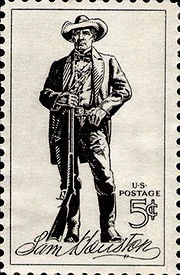 Republic of Texas President Sam Houston, Governor of Tennessee and then Texas, was the son of Major Samuel Houston and Elizabeth Paxton. Houston’s ancestry is traced to his great-great grandfather Sir John Houston, who built a family estate in Scotland in the late 17th century. Sir John’s son, John Houston, immigrated to the Pennsylvania colony in 1735.
Republic of Texas President Sam Houston, Governor of Tennessee and then Texas, was the son of Major Samuel Houston and Elizabeth Paxton. Houston’s ancestry is traced to his great-great grandfather Sir John Houston, who built a family estate in Scotland in the late 17th century. Sir John’s son, John Houston, immigrated to the Pennsylvania colony in 1735.
Sam Houston Commemorative Issue of 1963
1882 “Highland Destitution”. Dundee Advertiser. Potato Famine, hundreds starve, thousands emigrate. In the 1880s, the technical issue of how to avoid future famines or seasons of destitution in the Highlands became submerged in the political question of how to address the grievances of Highland crofters [tenant farmers living on small farms of 14 to 30 acres] and agricultural labourers without land. Landlords had taken to heart McNeill’s comments on the need to prevent uncontrolled population growth in crofting areas by preventing sub-division or multiple occupancy of crofts; they had taken much less notice of his view that crofters should be granted secure leases. Consequently, there was growing resentment amongst the crofting communities.[1] In 1882 there were failures of both the potato and cereal harvests in the Hebrides (because of blight and wind damage, respectively); this led to widespread destitution in 1883. There was also unrest among the crofters and formation of a Highland Land League which took its inspiration from the Irish Land League. The Gladstone Government set up the Napier Commission (a “Royal Commission of Inquiry into the Condition of Crofters and Cottars in the Highlands and Islands” under Lord Napier ) to identify remedies. [comment – Basically, the crofts were cleared of tenants by 1823, and not resettled until after 1878. Meaning anyone cleared at either accommodated themselves by emigrating or had died. Thus the question was who among the Scots remained around to take advantage of the Crofters’ Act of 1886?]
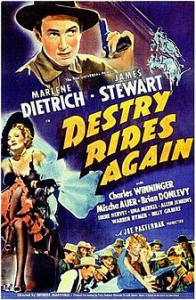 1939 Destry Rides Again (AKA The Man from Montana) (1939) is a western film.
1939 Destry Rides Again (AKA The Man from Montana) (1939) is a western film.
Poster. James Maitland “Jimmy” Stewart 1908-1997. Major General United States Air Force, American actor, Scottish descent.
1995 Tova Ann Choate (nee Leigh) married Mark Irvan Choate SLAKE temple. Mark’s Scots clans included Lamont 1372, Lennox 1150 Leslie Earl of Ross 1390, Levington of Saltcoats 1500, Levinstoun of Callendar 1450, Lindsay Earl of Crawford Lanark 1480, Lindsay of Crawford 1340, Livingstone of Bachull, Lochore 1300, Lockhart of Barr 1600 Lockhard Lockheart, Lorens 1166, Lovain 1300, Lumsden of Blanerne, Luss 1330, Lyne 1208.
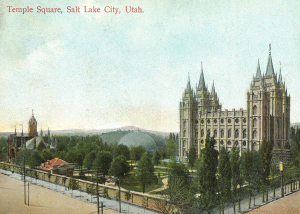 Vintage post card ‘Temple Square,Salt Lake City, Utah.’
Vintage post card ‘Temple Square,Salt Lake City, Utah.’
1999 Cynthia married Paul Choate in SLOUI temple.
2006 Jonathan Allen Choate born, (Clans Semple or Sempill Semphill 1560 Seton of Berwick 1430, Seton of Gordon and Huntly 1430, Shires 1692 GAL, Sibbald of Balgony Fife 1460, Sinclair Earl of Orkney and Caithness 1510 Saint Clare, Somerville of Carnwarth 1460 Summerville, Spreull of Cowden Spreule, Stewart Royal King of Scots Earl of Strathearn 1371-1460, Stewart Duke of Albany Earl of Fife 1424, Stewart Earl of Atholl 1540, Stewart Earl of Buchan 1480, Stewart Earl of Lennox 1425, Stewart Earl of Mentieth 1340, Stewart of Bonkyl 1340, Stewart of Lorne 1490, Stewart of Ochiltree and Avandale 1548 Evandale, Stewart of Methven (Meffen)1560, Stewart of Traquair 1520, Stirling of Glenesk 1380, Straloch 1340, Strang 1500 aunt, Strathen 1274, Sutherland of Inverness and Clan Murray of Tullibardine Perth.)
Disclaimer: The author of each article published on this web site owns his or her own words. The opinions, beliefs and viewpoints expressed by the various authors and forum participants on this site do not necessarily reflect the opinions, beliefs and viewpoints of Utah Standard News or official policies of the USN and may actually reflect positions that USN actively opposes. No claim in public domain or fair use. © John Choate
Utah Standard News depends on the support of readers like you.
Good Journalism requires time, expertise, passion and money. We know you appreciate the coverage here. Please help us to continue as an alternative news website by becoming a subscriber or making a donation. To learn more about our subscription options or make a donation, click here.
To Advertise on UtahStandardNews.com, please contact us at: ed@utahstandardnews.com.


Comments - No Responses to “December 29th Scots Book of Days. A.D. Thomas Becket, Archbishop of Canterbury.”
Sure is empty down here...